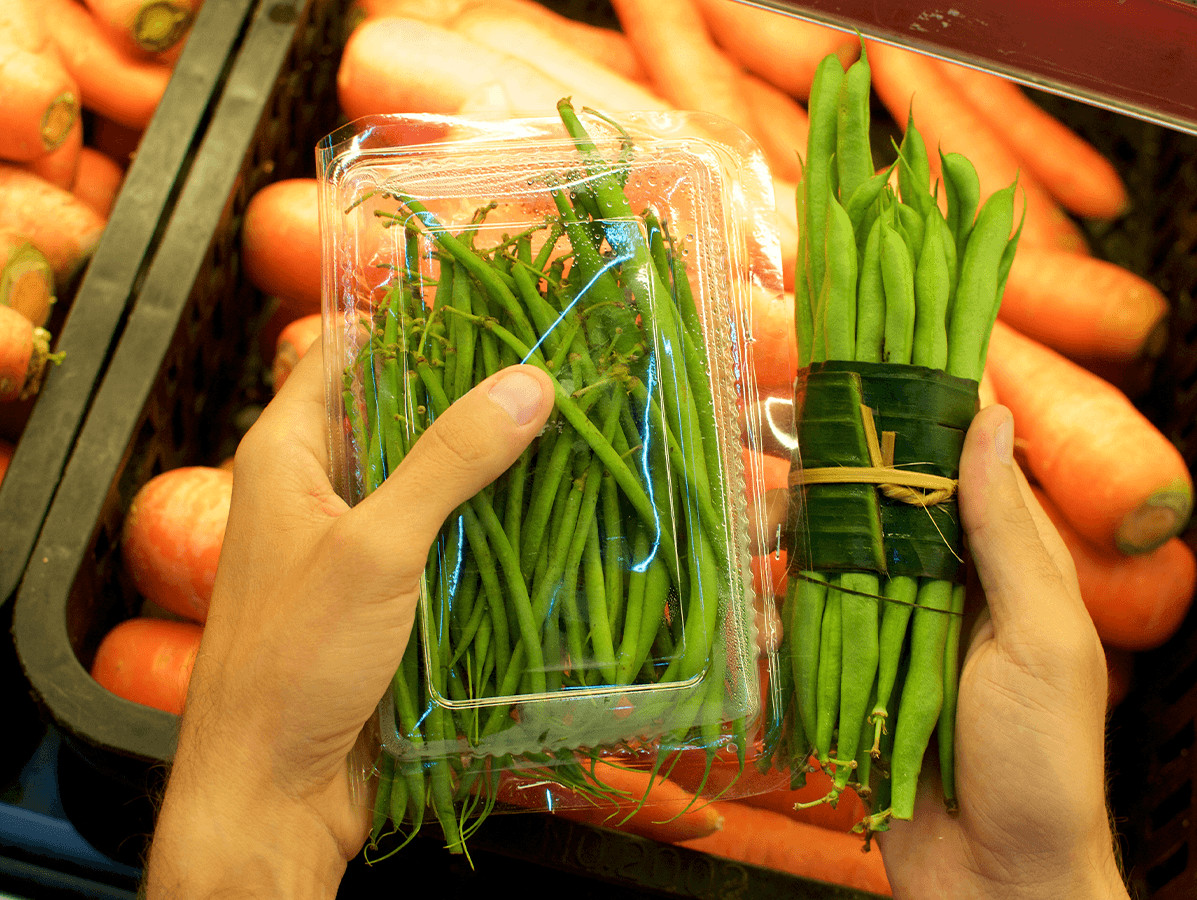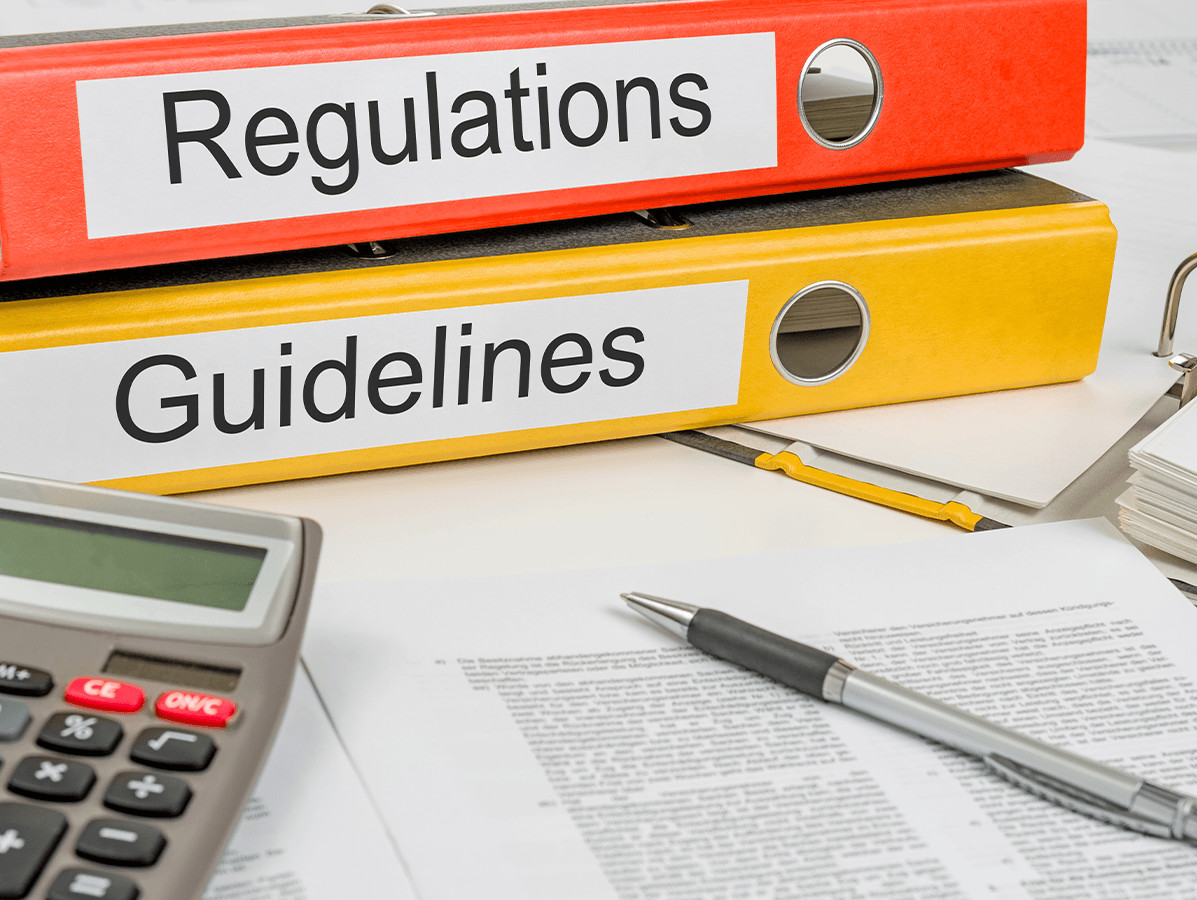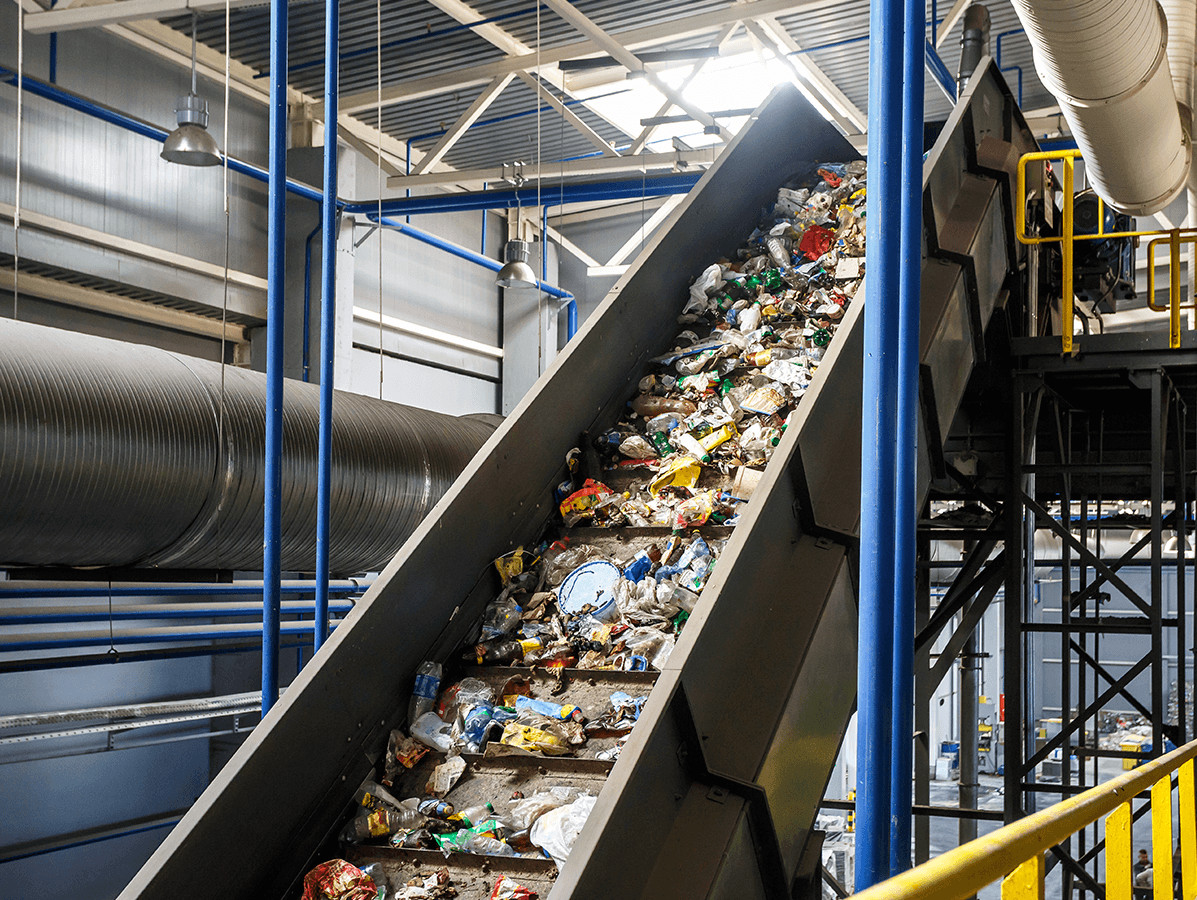
Plastic is lightweight, has good protective properties and is therefore a widely used material for packaging in the food industry. Unfortunately, current plastic packaging is far from circular. Packaging that causes the least greenhouse gas emissions has the greatest potential to increase the plastic soup, and vice versa. What is the smartest thing to do?
The European Union is striving for a circular economy for plastic packaging, and rightly so. Roughly two thirds of plastic packaging is used for foodstuffs, which implies that recycled material should also be used in food packaging. But that is where the problem lies. The same European Union has drawn up guidelines for the safe use of recycled material in food packaging. And in the field of maximum consumer protection, it opts for a very strict risk assessment. Well-intended from the perspective of consumer protection, disastrous for the application possibilities of recycled material.
A more realistic assessment of the risks would make the application of more recycled material possible [Franz & Welle, 2022], but the political will seems to be lacking. In August 2021, the joint German food and recycling industries sent an upset letter to EU Commissioners Kyriades and Sinkevičius: EU directives have to be aligned. If more recycled material is to be used, it needs to be possible to do so. One of the consequences of the conflicting policies is the substantial imbalance between supply and demand for recycled PET from bottles from deposit refund systems. More and more food companies want to use this material for packaging for meat, cheese, salads, etc. and bottlers are legally forced to use higher percentages of recycled content in their bottles. This leads to friction between companies and sectors.
Meanwhile, new laws are being proclaimed and prepared. Examples are the European SUP (single use plastics) policy, the British tax on virgin (fossil) plastic and the French circular economy decree with reuse targets and bans on the use of plastic packaging for some specific fresh products. This raises the question of what the effect of stacking up all these laws and requirements will be on their effectiveness and what this means for the food industry...
Until five years ago, 'limiting greenhouse gas emissions' was the main objective of the sustainability policy for packaging. Widely accepted calculation methods have been developed for this purpose in the form of life cycle analyses. These LCAs are used by all stakeholders to support their policies. This has led to thinner, lighter plastic packaging that provides better protection for the product, but often consists of a combination of several materials. This, in turn, is unfavourable for recycling.
In addition, every recycling system features leakages, and not only in Asian countries. Western countries also contribute to litter and the plastic soup. Even if in the Netherlands 'only' a few kilotons per year of plastic packaging escapes into nature, it is transformed into billions of microplastic particles over the years. The environmental effects are still unknown, but irreversible and potentially catastrophic. How is the food industry going to deal with this?

In response to the drive towards a more circular economy, many food companies have made big promises in 2019, for example through the Plastic Pact. They pledged that their packaging would be recyclable, reusable or compostable by 2025 or 2030. This has changed the focus of sustainability goals: recyclability and circularity are no longer seen as means to an end, but as objectives. This causes contradictions between, on the one hand, protective, lightweight packaging made of multiple materials and therefore not recyclable and, on the other hand, less protective heavier packaging that is recyclable.
In its 'State of Sustainable Packaging' [KIDV, 2020] the Dutch Institute for Sustainable Packaging states that we are moving from a linear economy, via a circular economy to an economy with 'intrinsically sustainable packaging'. In other words, eventually we will need packaging that protects well, causes a minimum of greenhouse gas emissions, is recyclable and does not pose a threat to nature if it does end up there. They call this 'biocompatible'. For packaging such as an egg carton made of moulded fibre, this is relatively easy to achieve. But for moist or oxygen-sensitive foodstuffs, for example, no solutions are available, yet. Much development work is needed to develop new biobased materials.
There are many visions of tomorrow with different pathways. They all serve different goals of the stakeholders, or relate to different timeframes. A shared vision for the future of food packaging is still lacking. Below are some routes that may play a role in the future:
The current recycling chain can certainly be improved. The packaging industry can contribute to this mainly by applying design-for-recycling guidelines. Unfortunately, this is not an option for all food packaging [Brouwer et al. 2020]. In addition, the restrictive EU food safety policy still precludes actual circularity, since recycled food packaging may not be used in new food packaging. This increasingly places the food industry in a defensive position. They have to explain why their packaging protects well, but is not recyclable. Despite all efforts, this will not solve the microplastic problem. The industry will see the shrinking freedom of packaging as a burden.
A development that has already been started by companies such as Ioniqa, Indorama and Cure, is the chemical recycling of PET trays and textiles. The monomers are recovered and purified. From these, a recycled PET is made with qualities that cannot be distinguished from virgin PET. Under good conditions, these processes could contribute to a more circular economy for PET packaging within five years, and ease the scarcity of food-grade PET. The processes still have to be developed further and the European food safety policy should not be unnecessarily complicated for these new processes.

Many Dutch companies are working hard to develop pyrolysis routes to convert PE and PP packaging waste into pyrolysis oil. By cracking this, monomers are produced, from which food-grade recycled PE and PP can be made. The petrochemical industry is keen for this route to succeed, as it will strengthen the geopolitical position of the European petrochemical industry in relation to the now dominant Asian one. It will also provide this industry with a strengthened license-to-operate, without necessarily strengthening the position of the European food industry. Success on this route again will involve strict design-for-recycling rules, will only partially reduce greenhouse gas emissions and will not solve the plastic soup problem.
Northern European countries with a surplus of renewable energy are working hard on hydrogen plants and carbon capture installations at incineration plants. The idea behind this is to simply keep plastic packaging in the residual waste, incinerate it regularly and capture the carbon dioxide (CO2). This can be converted into new plastics in a number of steps. Technically it is possible and it even seems considerably cheaper; but there is still a lot of process optimisation to be done. For the food industry, it would mean no restrictive design rules and possibly lower payments to the EPR organisation. Unfortunately, we do not have a surplus of renewable energy in the Netherlands. It would not solve the plastic soup problem either, without involving new biopolymers. In short, this route is more out of reach, but offers potential advantages.
For a number of applications (egg cartons, fast-food clamshells, etc.), bio-based solutions are already available, but not yet for many moist and oxygen-sensitive foodstuffs. These are expected to become available in the coming decades. For bio-based materials, new recycling processes will have to be set up. In addition, complementary, inspiring policy is required.
The mentioned routes may all prove to be too time consuming for food companies. That is why Western European companies such as Pieter Pot and LOOP are exploring the possibilities of reusable packaging, or are already applying it. Granted, this requires a considerable investment and change in customer behaviour, but a well-functioning system offers many advantages. Just ask any Dutch brewer about their standard BNR bottle and how they like it. Unfortunately, the solution cannot be applied blindly everywhere. After all, if the packaging cannot be cleaned properly, the return logistics are not well organised, the sales partners do not cooperate or the packaging is too vulnerable, the potential benefits of a reuse system are not realised. If this system works well, there are many advantages: it is good for customer loyalty, the food industry itself remains in the lead, reusable packaging is by definition circular and less packaging will end up in nature. The crucial question for any food company, however, remains whether it is capable of setting up such a system on its own or together with sales partners and competitors.
Ultimately, we will have to move towards a combination of different solutions. No single route is perfect.
Sources:
Franz, R.;Welle, F. Recycling of Post-Consumer Packaging Materials into New Food Packaging Applications—Critical Review of the European Approach and Future Perspectives. Sustainability 2022, 14, 824.
KIDV. The State of Sustainable Packaging. The Hague: Netherlands Institute for Sustainable Packaging; 2020.
Brouwer, M., Thoden van Velzen, U., & Workala, Y. (2021). Recyclebaarheid van Nederlandse kunststofverpakkingen : de status van 2021. (Rapport / Wageningen Food & Biobased Research; No. 2150). Wageningen Food & Biobased Research.
Photos: beans: ©Marlon Trottmann/shutterstock.com, folders: ©Zerbor/depositphotos and waste: ©Tsyrkunovich/depositphotos
Source: Vakblad Voedingsindustrie 2022